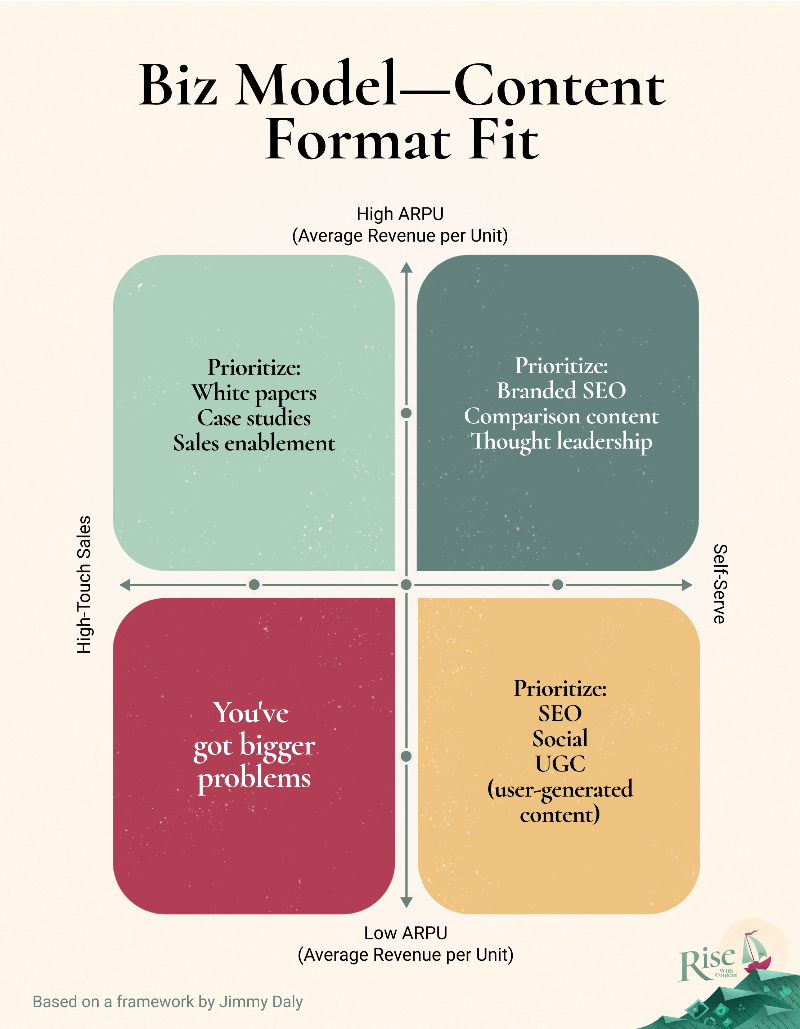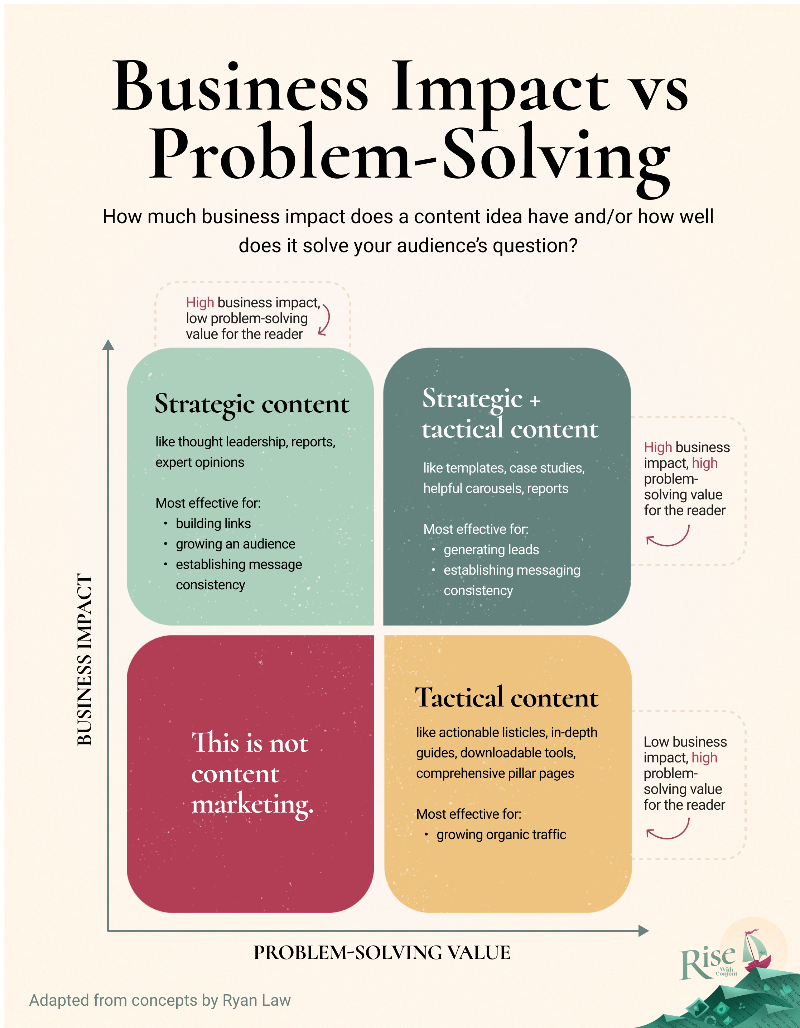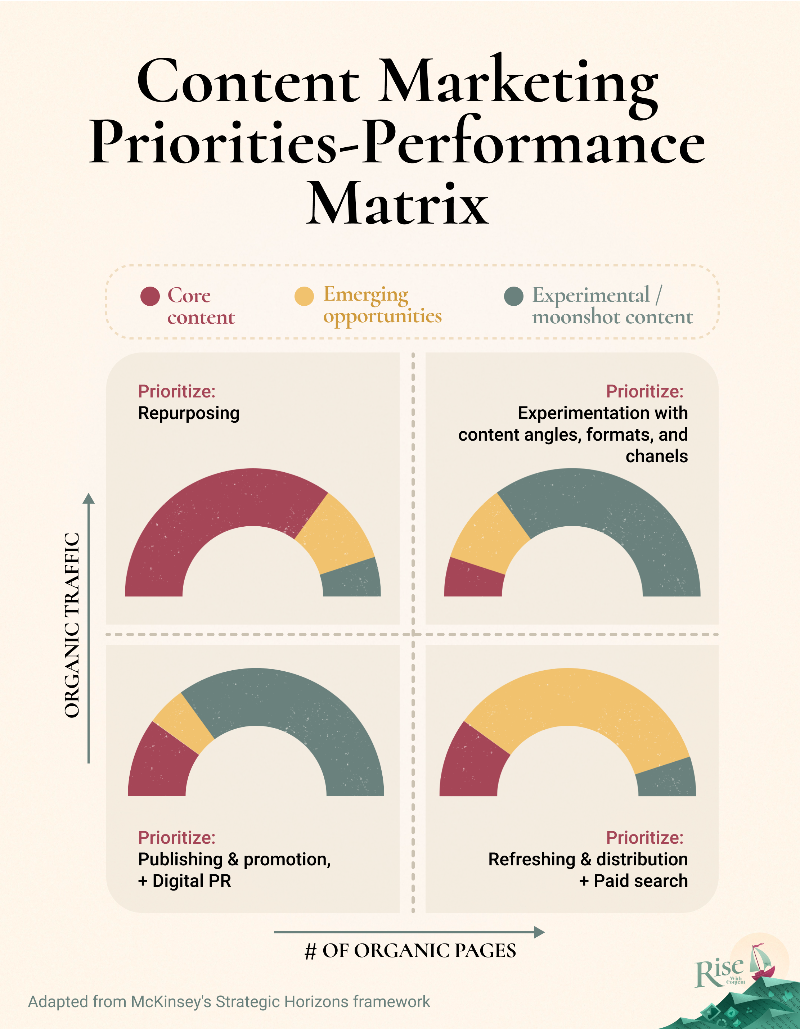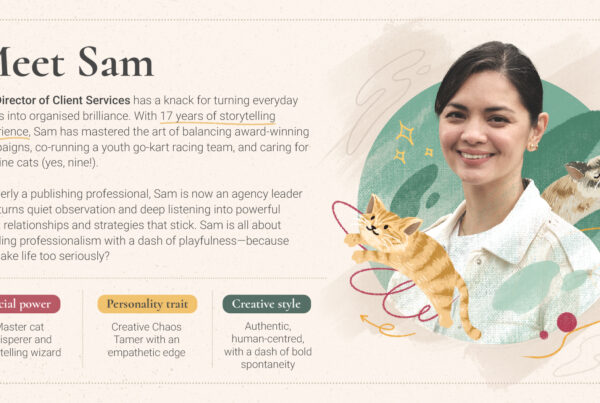
Do you ever feel like you’re pulling threads out of thin air when you come up with content marketing ideas?
Scramble to justify a strategy to your boss?
Struggle to choose which content activities, formats, and distribution channels to prioritize?
You might be in need of a framework.
When I started learning about and developing my own content marketing frameworks, I was mind-blown.
Not because they’re complicated — but because they absolutely make sense. They solidified the abstract knowledge I had in my mind. They offered the kind of wisdom that made me go, “Of course. Why didn’t I think of this?”
By knowing these frameworks, you’ll gain mental scaffolding to quickly answer questions like:
- My competitors and I have similar products. How can I use content to make my brand distinct?
- I want to grow an audience. What content formats can I prioritize?
- My blog has lots of pages but little traffic. What should I do instead of publishing more content?
- How do I know which content topics are worth pursuing?
Let’s dive in.
The content marketing frameworks we use at With Content
#1: Biz Model-Content Types Fit framework
Your business model dictates your content strategy, writes content marketer Jimmy Daly in his book, 10 Advanced Content Marketing Concepts. Your strategy emerges when you understand three things:
- Whom you sell to
- How much you make per sale (expressed in this framework as average revenue per unit, or ARPU)
- How long it takes you to close a sale

The framework above shows that businesses fall into one of three categories:
🏊🏼♀️ High ARPU, Long Sales Cycle
These are usually businesses that sell to enterprises. Each sale has a high dollar value, but takes months and several conversations to close.
Given the financial stakes involved, marketers with this business model need to emphasize the usefulness and value of their product/service — hence the need to prioritize content like whitepapers, case studies, and sales enablement assets.
🚴🏾♂️ High ARPU, Short Sales Cycle
Think businesses that sell to SMEs. The sales cycle is quick and can even involve self-serve — meaning customers sign up to buy the product/service without once talking to a salesperson. This is a common business model for SaaS.
Since this business model is lucrative and has a low barrier to entry, companies in this category face tons of competition. Often, there are few differences between their product and their competitor’s.
Marketers will thus need to focus on pointing out the differences using comparison content, associating their brand with generic search terms using branded SEO, and emphasizing their distinct positioning through thought leadership.
🏃🏽♀️ Low ARPU, Short Sales Cycle
B2C products and services made for the masses fall under this category. With low ARPU, these businesses rely on sales volume to make a profit. This requires content that leverages network effects (social media), social proof (user-generated content), and high-volume search terms (SEO).
#2: Business Impact vs Problem-Solving framework
Content is either tactical or strategic, writes content marketer Ryan Law.
Tactical content tells you how to do something; strategic content tells you how to think about something in a new way.
The former typically has high problem-solving value and is great for growing organic traffic and generating leads. The latter tends to have high business impact and is useful for building an audience, winning links, and establishing messaging consistency.
We used these concepts to create the following framework:

In this matrix, we recognize that content can be either tactical or strategic, or both. A healthy content mix comprises different types — though you may want to emphasize one type of content over the other depending on your immediate goals, as well as your business model (see framework #1).
This framework is also the basis for With Content’s ideation tool, which you can access if you’ve completed this survey.
#3: Content Marketing Priorities-Performance Matrix
There’s so much you can do with content — how do you know what to do first?
We propose an answer with our framework:

We at With Content developed this framework to identify content marketing priorities based on simple proxies for performance indicators: how much content you’ve published versus how much traffic you get. A lot of pages but little traffic is obviously a problem; few pages but loads of traffic means the opposite.
(We use Ahrefs, an SEO analysis tool, to get trend lines and ratios for number of organic pages and amount of organic traffic.)
We combined this matrix with an adaptation of McKinsey’s strategic horizons framework. This modified framework splits content into three levels:
- Core topics. These are topics you’ve already seen success in and are core to your brand/business.
- Emerging opportunities. Based on competitor research and industry knowledge, consider what new topics you can cover that also appeal to your audience.
- Moonshots. Content that’s high risk, high reward — think formats and angles you’ve never tried, such as creative storytelling, strong op-eds, or interactive content. Test one out and see if there’s huge success.
A general recommendation is to follow the 70-20-10 rule: spend 70% of your effort on core content, 20% on emerging opportunities, and 10% on moonshots.
But we don’t think this advice applies universally. You should first consider how your existing content is performing, which you can gauge based on where you fall in this matrix.
#4: Value Proposition-Pain Points Merger
At With Content, we believe that the place where your value proposition and your audience’s pain points meet is where your message positioning should be. This principle guides the way we gauge the quality of topic ideas.

Topics that discuss only your value proposition without considering the customer’s problems are self-serving. Topics that address your audience’s pain points outside of your value proposition are wasted opportunities.
It’s easy to come up with topics that serve either your proposition or your customers’ pain. But creating content where these two factors intersect is the heart of content marketing. Before signing off on your content calendar, assess each topic to see if it satisfies both factors.
Teach your team about content marketing frameworks: Get a slides version of this email
Did any of these frameworks trigger an aha moment for you? They certainly did for me. And they’re now part of my mental scaffolding when I work on content strategies for clients.
If you want to share them with your team, here’s the presentation format.
That said, they’re only frameworks — what and how you build on them is what matters. As one of my former colleagues once said, no strategy survives its first contact with reality. So feel free to adapt, test, or modify these content marketing frameworks based on what works for your context.
Let’s raise the bar of content marketing in Southeast Asia
We hope you enjoy Rise and find this newsletter helpful.
And if you do, why not share it with a friend?
Thanks for reading!
![]()
Katrinawith help from Nikki and DanielDesign by Aldrin



